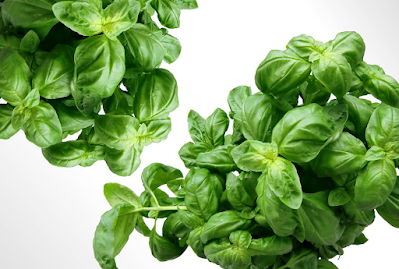Introduction
We all know too much salt can be bad for our health, yet many of us find it difficult to find ways to season our meals without using added salt. From swapping out traditional ingredients for healthier substitutes to learning how to make use of herbs and spices, you will learn how to whip up vibrant recipes that are both healthy and exciting. If you’re looking for a way to add flavor to your meals without compromising your health, this is the perfect place to start!Eating a healthy, balanced diet is the foundation for overall wellness. Yet, with processed and convenience foods overwhelming grocery store shelves, it’s easy to consume too much sodium, leading to uncomfortable symptoms such as bloating and water retention. Fortunately, there are ways to reduce your sodium intake without sacrificing flavor. This guide will provide you with tips and to help you create delicious meals that are low in salt.
Why Eating Low-Salt Diets is Beneficial
Eating a low salt diet is beneficial for several reasons. First and foremost, it can help to lower blood pressure, which is a major risk factor for heart disease and stroke. When we consume too much salt, our bodies retain water, which can lead to an increase in blood volume and ultimately increase blood pressure. By reducing the amount of salt in our diet, we can help to lower blood pressure and reduce the risk of heart disease and stroke.Additionally, a low salt diet can also help overall heart health. Consuming too much salt can lead to an increase in inflammation, which is a major risk factor for heart disease. By reducing the amount of salt in our diet, we can decrease inflammation and improve heart health.
Eating a low salt diet can also benefit weight loss or weight management. Sodium can cause water retention and bloating, which can make you feel heavier. Reducing the amount of salt in your diet can help to decrease water retention and bloating, which can help to improve your overall weight.
It's also worth noting that a low salt diet can improve kidney function and reduce the risk of kidney disease. Sodium can damage the kidneys over time, leading to increased risk of kidney disease. By reducing the amount of salt in your diet, you can help to protect your kidneys and maintain their healthy function.
Overall, eating a low salt diet is beneficial for heart health, weight management, and kidney function. It's always best to consult with your doctor or a nutritionist to help you figure out how much sodium you should be consuming.
Product Labels and Sodium Content
There are several different labels that can be used on products that contain low sodium. It's important to note that these labels are regulated by the FDA and should be used correctly and accurately. It's also important to read the nutrition facts label and ingredient list to check the sodium content of a product, as these labels may not be always reliable.Some of the most common include:
"Low Sodium"
This label indicates that a product has140 milligrams of sodium or less per serving.
"Reduced Sodium" or "Less Sodium"
This label indicates that a product has at least 25% less sodium per serving than the regular version of the product.
"No Salt Added" or "Unsalted"
This label indicates that no salt was added during the processing of the product. It's important to note that this does not necessarily mean that the product is low in sodium, as it may still have naturally occurring sodium.
"Sodium-Free" or "Salt-Free"
This label indicates that a product has less than 5 milligrams of sodium per serving.
"Lightly Salted" or "Lightly Seasoned"
This label indicates that a product has 50% less sodium than the regular version of the product.
Tips for Creating Flavorful Dishes with Little to No Salt
There are plenty of ways to season your food without adding salt and still make it taste delicious. By experimenting with these different options, you can season your food without adding salt and still make it taste delicious. Remember, it's always best to consult with your doctor or a nutritionist to help you figure out how much sodium you should be consuming.Here are a few options to try:
Herbs and Spices
Fresh or dried herbs and spices add a lot of flavors to food without the added sodium of salt. Some great options include basil, thyme, oregano, cumin, and black pepper.
Citrus
Lemons, limes, and oranges add a bright, fresh flavor to food. Squeeze fresh juice over fish, chicken, or vegetables for a burst of flavor.
Garlic and onions
Both garlic and onions add a lot of flavors to food and can be used in a variety of ways. Try sautéing garlic and onions in a pan before adding other ingredients or add minced garlic and onions to marinades or sauces.
Vinegar
Mustard
Mustard can be used in a variety of ways to add flavor to food. Try using it as a marinade for meats, or as a dressing for salads.
Sweeteners
Honey, agave nectar or maple syrup can be used to sweeten food without adding sodium. Try using it as a glaze for meats or as a sweetener in dressings or marinades.
Nuts, Seeds, Grains and Dried Fruits
Nuts, seeds, grains and dried fruits can add a crunchy texture and nutty flavor to food. Try using chopped nuts as a topping for salads or roasted vegetables.
Pickled Ingredients
Umami
Umami is the fifth taste, often described as savory, meaty or broth-like. Umami can be found in mushrooms, soy sauce, fish sauce, Worcestershire sauce, Parmesan cheese, and other fermented products like miso and tempeh.
Conclusion
Adding salt to food is a common practice, but it can contribute to high blood pressure and other health issues. It is possible to create flavorful dishes without adding salt by using a variety of herbs, spices, and other seasonings. From garlic and onion to lemon and lime juice, to fresh herbs like basil and cilantro, there are many options available to add flavor to your dishes. Additionally, pickling vegetables is a great way to add flavor and preserve them.
By using these methods, you can create delicious, healthy meals that are low in sodium. Remember that it's also important to check nutrition labels and ingredient lists when buying packaged foods and look for labels like "low sodium" or "no salt added". With a little bit of creativity and experimentation, you can enjoy flavorful food without the added salt.

.jpg)










No comments
Post a Comment